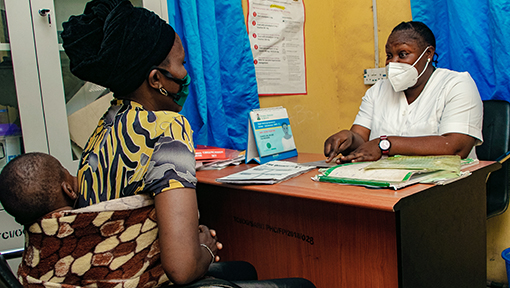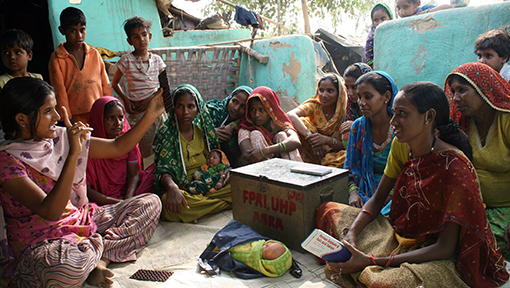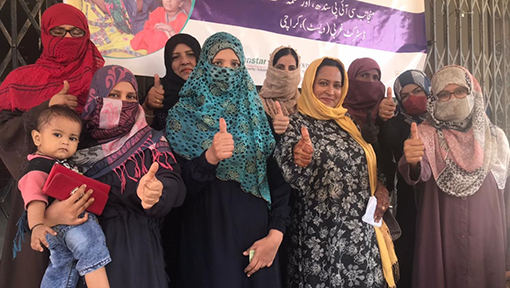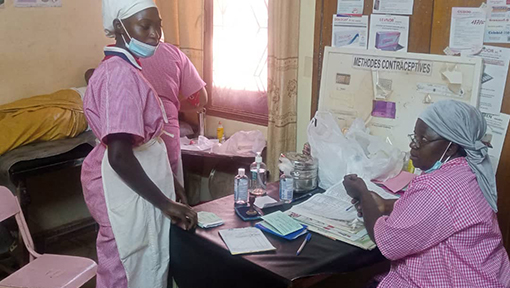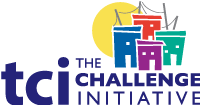Gender Essentials
Data and Measurement- Home
- Help and Support
- Close
- Toolkits
- Global Toolkit
- AYSRH Toolkit
- Hub Toolkits
- Core High-Impact Practices
- Gender Essentials Mini Course
- Close
- Resource Collection
- Community of Practice
- Coaching
- Log In/Register
- My Profile
- English
Data for decision-making is a TCI guiding principle
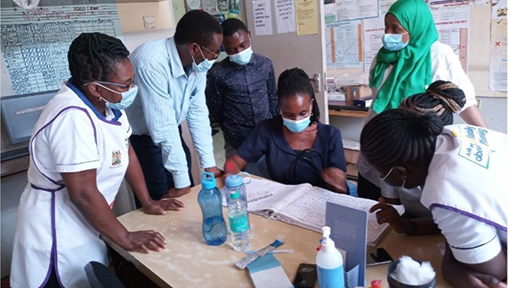
All TCI stakeholders and partners use data in all aspects of engagement with TCI – from the expression of interest to program design, implementation and graduation and ongoing monitoring of program progress. Near real-time data for decision-making (D4D) is a guiding principle of TCI. As such, TCI strengthens the capacity of local governments and its partners to use data for problem-solving and better decision-making.
Why look at gender indicators?
Because what is measured is more likely to be prioritized, it is important to include indicators that measure the outcomes of gender intentional interventions. These indicators help reveal barriers to achieving success. They can provide vital information for adjusting programs and activities so that they better achieve gender equality goals and do not create adverse impacts on women and men, girls and boys. They can also be used to measure gender mainstreaming within local governments and TCI’s operations.
What are gender indicators?
There are three main types of gender indicators: sex-disaggregated indicators, sex-specific indicators and those related to gender power relations and systems.
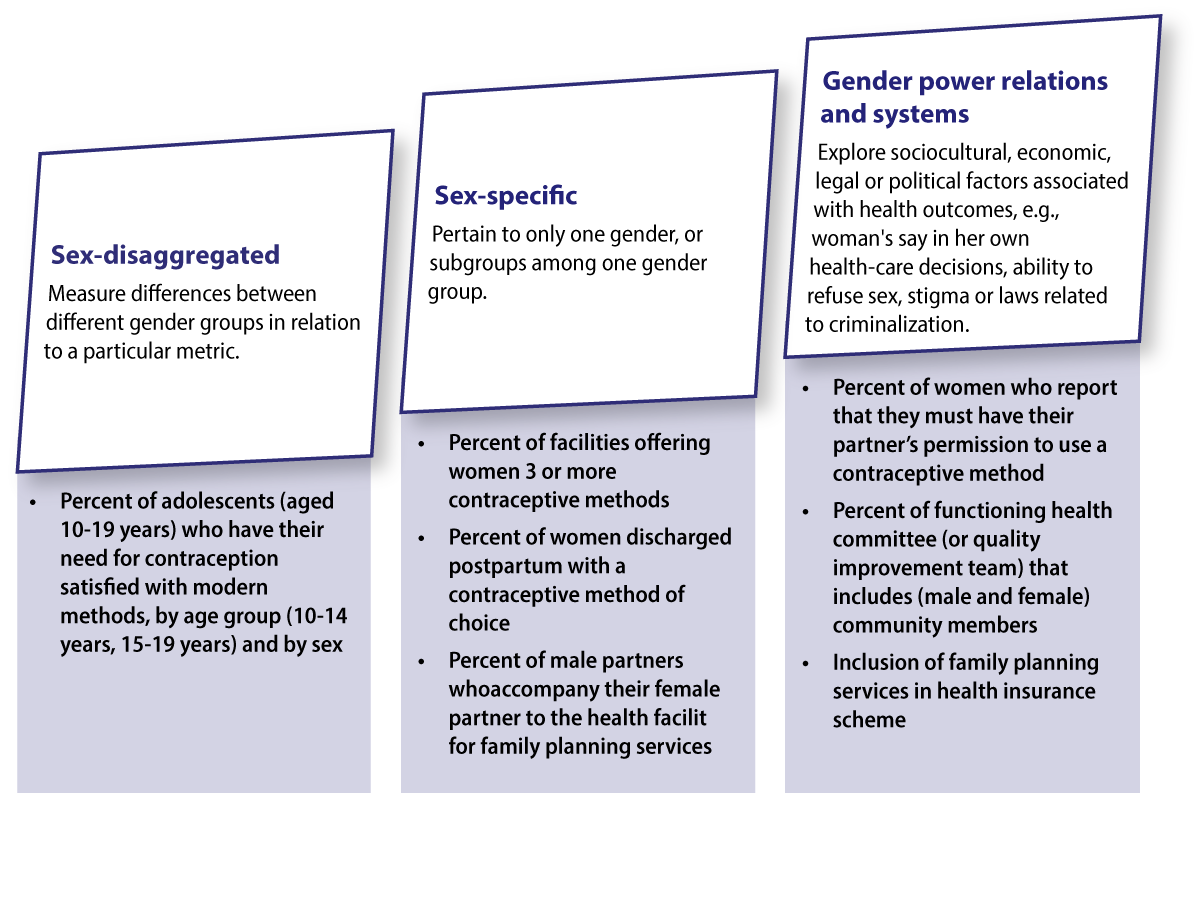 What information can gender indicators provide?
What information can gender indicators provide?
- Identify points of intersectionality where people’s lives are impacted and shaped by their identities, social factors and relationships. These can create intersecting forms of privilege and oppression depending on a person’s context and existing power structures such as patriarchy, ableism, colonialism, imperialism, homophobia and racism. [Source: UN Women]
- Break down situations by social stratifiers: sex, age, economic status, education level, place of residence, ethnicity or race, etc.
- Count women of different types, not only the number of women of reproductive age but also those who are married and unmarried, youth (aged 15 to 24 years) or very young adolescents (aged 10 to 14 years), employed or unemployed, or education status
- Count the number of women who are: able to leave the house, make their own decisions about health, make daily purchases, decide how many children to have, decide how to use their own money, have their own money, worked in last week/year, have a bank account, believe childbearing is women’s concern, believe contraception is women’s concern, believe contraception is for promiscuous women, for example.
- Assess women’s autonomy: Who usually makes decisions about reproductive health care for yourself? Who usually makes the decision on whether or not you should use contraception?
- Identify relevant women’s organizations and organizations promoting gender integration and supporting gender equality.
- Provide evidence of intended outcomes and impact of interest to donors and for use in advocacy.
How to get started
- Do sex-disaggregated data/indicators already exist? For example, do facility records collect data by sex, age and method of modern contraception?
- What sex-specific indicators are important to you to collect to assess your program’s success? For example, do you have data on the number of contraceptive methods being offered?
- Are gender equality and power relations indicators already being collected? For example, do you know if women have access to financial resources and transportation to seek family planning services?
Considerations when prioritizing gender indicators
When choosing which gender indicators to include consider:
- What is achievable and feasible?
- What could lead to substantial change/impact?
- Which indicators are directly linked to program outcomes and impact?
- Which data gathering techniques or sources are most practical or cost-effective?
- What data sources and analyses already exist which can be leveraged?
- How can data and analytics support implementation, review and learning related to key problems that your program is likely to face?
- Seek a portfolio of indicators that span sex-disaggregated, sex-specific and gender power relations and systems data.
Illustrative indicators aligned with the integration of gender into TCI’s stages of engagement
The following indicators are examples of what could be measured and monitored throughout a local government’s engagement with TCI.
TCI APP USERS PLEASE NOTE
You will only receive CERTIFICATES by email – when earning a score above 80% – and will not be able to view or print a certificate PDF from the TCI app.
Test Your Knowledge
Earn a Certificate
Quiz Summary
0 of 5 Questions completed
Questions:
Information
You have already completed the quiz before. Hence you can not start it again.
Quiz is loading…
You must sign in or sign up to start the quiz.
You must first complete the following:
Results
Results
0 of 5 Questions answered correctly
Your time:
Time has elapsed
You have reached 0 of 0 point(s), (0)
Earned Point(s): 0 of 0, (0)
0 Essay(s) Pending (Possible Point(s): 0)
Categories
- Not categorized 0%
- 1
- 2
- 3
- 4
- 5
- Current
- Review
- Answered
- Correct
- Incorrect
-
Question 1 of 5
1. Question
There are three main types of gender indicators: sex disaggregated, sex specific and those related to gender power relations and systems.
CorrectIncorrect -
Question 2 of 5
2. Question
Why are indicators about gender important?
CorrectIncorrect -
Question 3 of 5
3. Question
Good data enables stakeholders and partners of TCI to make decisions and keep progress on track. It can also demonstrate impact to donors.
CorrectIncorrect -
Question 4 of 5
4. Question
Which indicator will NOT be measured by TCI?
CorrectIncorrect -
Question 5 of 5
5. Question
Gender indicators can help local governments:
CorrectIncorrect
Learn More about TCI’s Approach to Gender
Tip
Biases in data can perpetuate stereotypes that exacerbate existing inequalities. These biases can occur at any and all stages of data design, collection, analysis, interpretation, presentation and use. Tools such as Data 2X can help, available at https://data2x.org/. Other useful tools include OECD Development Centre’s Social Institutions and Gender Index (SIGI) and the World Bank Gender Data Portal.
Resources on data and measurement
- RADAR Gender Analysis Model: Creating Gender Sensitive Indicators for Coverage, Implementation Strength, Quality of Care
- EMERGE: Gender measurement and health measures repository
- Gender data portals
- A tool for strengthening gender-sensitive HIV and Sexual and Reproductive Health (SRH) monitoring and evaluation systems

